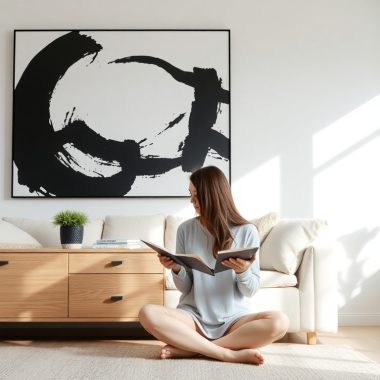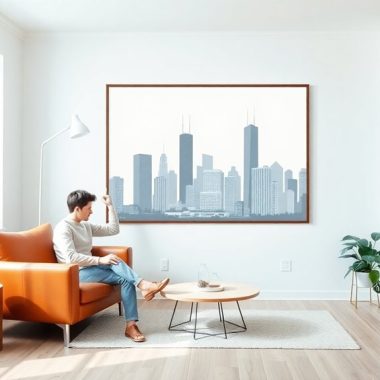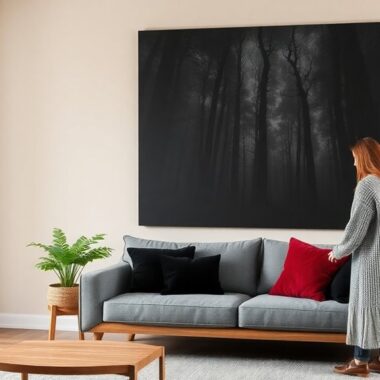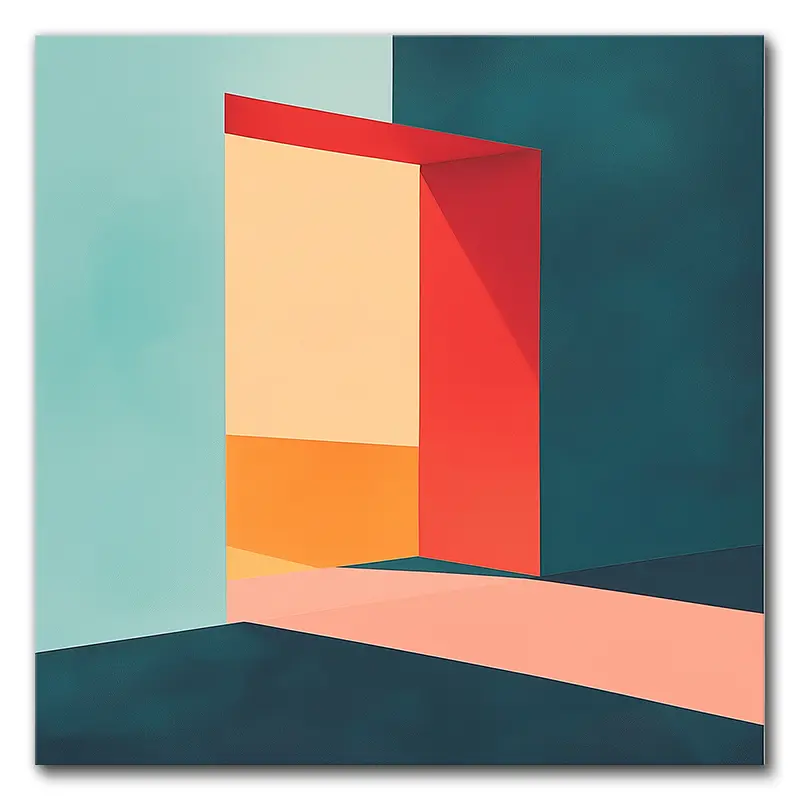Framing your canvas art can enhance its impact and improve your space. Start by selecting a frame that's slightly larger than your canvas for balance. Choose a style and color that complements your artwork while matching your room's decor. For a clean look, consider matting in understated tones. When hanging, position your art at eye level, using secure mounting hardware. Protect your piece with acid-free mats and UV-filtering glass to prevent fading. Finally, make sure everything's snug to avoid warping. With these tips in mind, your artwork will shine, and there's even more valuable guidance coming up next!
Frame Selection Strategies
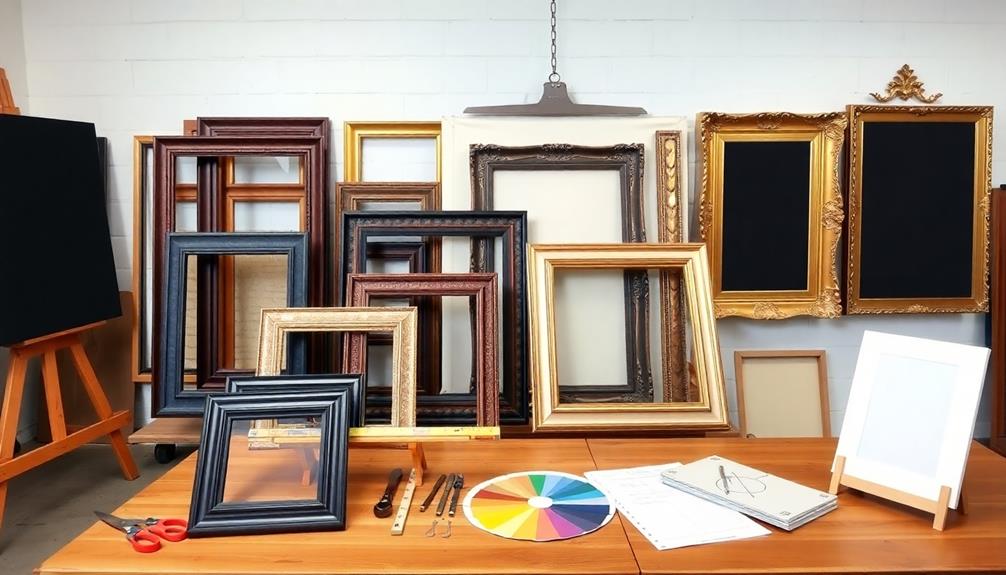
Choosing the right frame for your canvas art involves a blend of aesthetics and practicality. When you're selecting a frame for canvas art, aim for one that's slightly larger than your canvas. This not only provides balance but also boosts visual appeal. You'll want your framed canvas wall art to stand out, and having a little extra space around it can help achieve that.
Consulting local framing experts is a smart move, especially when it comes to size recommendations tailored to your specific artwork dimensions and style. They can guide you to the perfect fit, guaranteeing your framed art looks polished and professional.
Now, let's talk about frame styles and materials. Choose options that complement your artwork's aesthetic. Avoid overly ornate frames; they can overshadow the piece rather than improve it. Instead, consider something that harmonizes with the artwork, allowing it to be the main focus.
Depth matters too! Confirm the frame's depth matches the thickness of your canvas, particularly if you're working with textured canvases that might require frames with raised lips.
Lastly, think about the overall decor of the room where your artwork will be displayed. The frame should harmonize with the surrounding elements, creating a cohesive look.
Matting Techniques and Tips
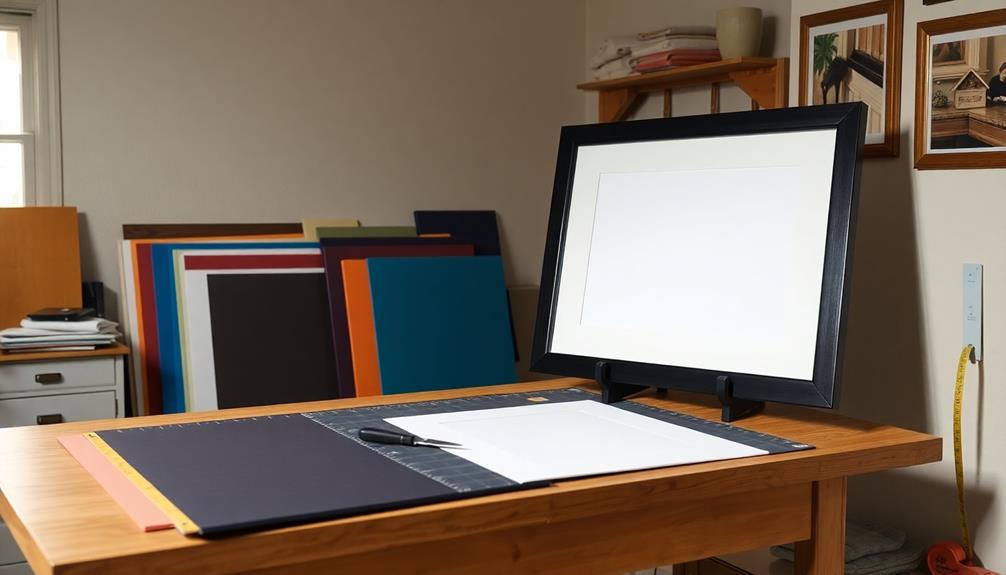
Matting your canvas art can greatly improve its presentation, providing both a decorative backdrop and a visual separation from the frame. When you select a mat, think about colors that complement your artwork. Understated tones can create a harmonious look, while accent mats can draw attention to specific hues within the piece. This technique not only enriches the overall aesthetics but also adds a layer of depth to your display.
It's important to verify that your mats are wider than the frame itself. This approach maintains visual balance, allowing the artwork to remain the focal point of your display. A well-chosen mat can transform how viewers perceive your art, offering a polished finish that boosts its impact.
Moreover, consider using acid-free materials for your mats. This choice is vital for preventing discoloration and damage over time, guaranteeing that your artwork is preserved for years to come. You wouldn't want a beautiful piece of art to fade away, right?
While matting is a great option, there are times when full-bleed framing might be suitable. This technique eliminates the mat, which can work wonders for artworks with bold colors or textures that stand out on their own.
In such cases, letting the artwork take center stage can be a powerful statement.
Effective Hanging Practices
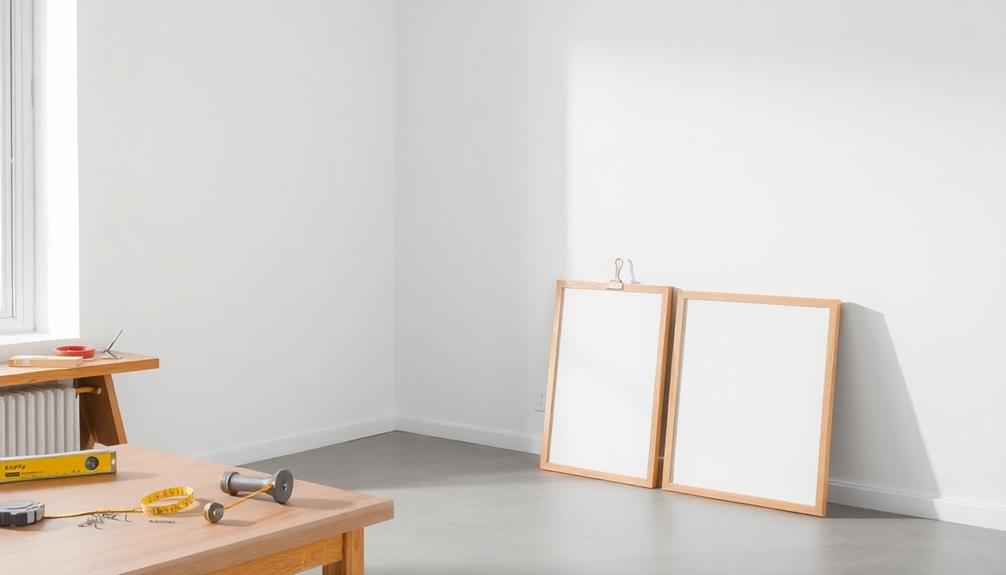
Once your canvas art is beautifully matted and framed, the next step is hanging it properly to improve its visual impact. First and foremost, aim to hang your artwork at eye level, typically around 58-60 inches from the floor to the center of the piece. This height guarantees ideal visibility and engagement, allowing viewers to appreciate your art fully.
When it comes to the actual hanging, consider using D-rings for a stable and secure attachment. These little metal rings prevent your artwork from swinging and provide a reliable mounting point.
Speaking of mounting, you should choose the right hardware based on the frame type and weight of your artwork to avoid any accidents—nobody wants their masterpiece crashing down!
If you're hanging multiple pieces, keep a 2-inch separation between them. This spacing creates a visually appealing arrangement and helps avoid that cluttered look that can detract from your art's beauty.
Also, take a moment to assess the wall height and surrounding furniture. The art should complement the room's layout and design, improving the overall aesthetic.
Lastly, never underestimate the importance of securing your canvas art properly. A little attention to detail can make a big difference in how your space feels.
With these effective hanging practices in mind, you can showcase your canvas art in a way that truly enhances your home's decor.
Preservation and Protection Methods
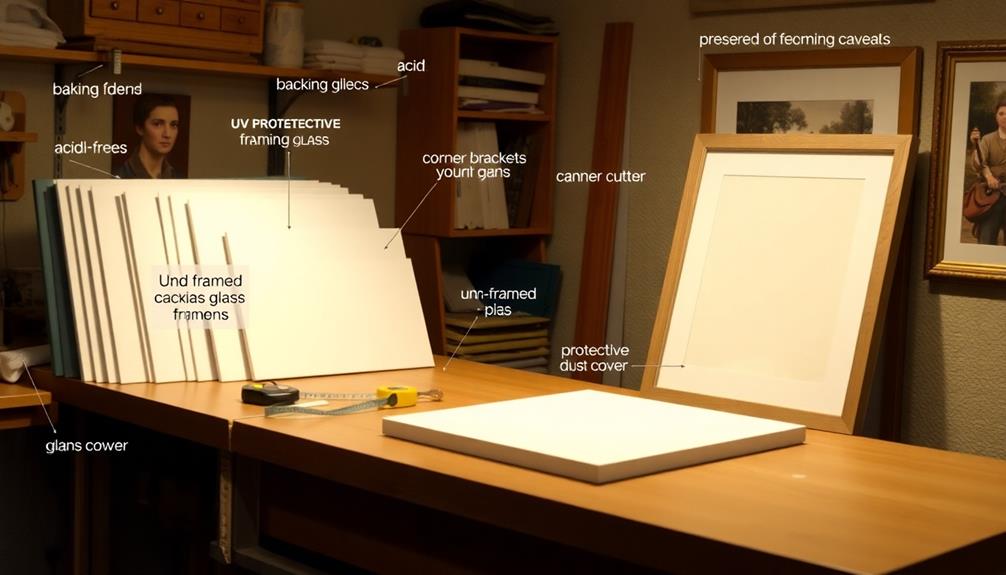
To keep your canvas art looking vibrant and intact, it's essential to implement effective preservation and protection methods. Start by using acid-free materials for mats and backing. This step prevents discoloration and deterioration of your artwork over time, guaranteeing it remains as stunning as the day you hung it.
Next, consider opting for UV-filtering glass or plexiglass. These materials act as a shield against harmful ultraviolet rays that can fade colors and damage your canvas. You'll appreciate the difference when you notice your art maintaining its original brilliance.
Regular maintenance is also key. Make it a habit to dust your framed canvas with a soft cloth. This simple action prevents dirt and grime from accumulating, which can dull the surface and affect its overall appearance.
When choosing a location for your artwork, avoid hanging valuable pieces near windows. Direct sunlight can expedite the deterioration process, so find a spot that balances visibility with protection.
Lastly, verify your canvas is properly secured within the frame. A well-fitted canvas prevents warping or shifting, maintaining both its visual appeal and integrity.
Custom Framing Considerations
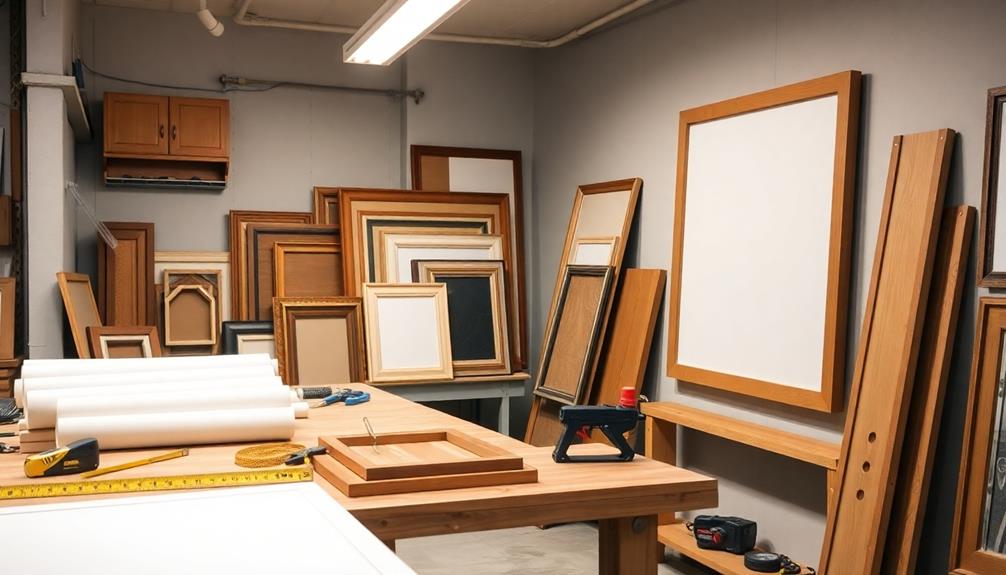
Choosing the right frame for your canvas art can greatly enhance its overall impact and longevity. When you decide to go the custom framing route, precise measurements are key. Make certain you accurately measure the length, width, and depth of your canvas to guarantee a snug fit within the frame. This way, you avoid any awkward gaps or a frame that swallows your artwork whole.
Next, think about the materials and finishes. You want a frame that not only enhances the visual appeal of your canvas but also complements your existing decor. Remember, a frame should serve as an extension of your artwork, not compete with it. Avoid choosing a frame color that closely matches the canvas; instead, opt for contrasting or complementary colors that highlight the piece's features.
Preservation is another critical aspect. Always consider using acid-free materials when framing your canvas. This choice helps prevent deterioration and yellowing over time, guaranteeing your art remains vibrant for years to come.
Final Thoughts
Framing your canvas art isn't just about aesthetics; it's also about preserving your investment and enhancing its impact. By carefully selecting your frame, mastering matting techniques, and employing effective hanging practices, you can transform your artwork from a simple decoration into a conversation starter. Remember, the right frame can uplift a piece while the wrong one can diminish its beauty. With these tips in hand, you're ready to showcase your art with confidence and flair.
At VerVeLush, we understand the importance of a perfect frame to elevate your canvas prints. Our selection of exquisite frames and expert guidance can help you create a stunning display that truly reflects your style. Explore our unique offerings and let us assist you in preserving and enhancing your cherished artwork.



